
|
Mammals by thehedge.org Continuing this section, some interesting information about mammals, that is the animals that you might find in hedges and similar areas. |
|
| These animals are listed in alphabetical order: |

|
Mammals by thehedge.org Continuing this section, some interesting information about mammals, that is the animals that you might find in hedges and similar areas. |
|
| These animals are listed in alphabetical order: |
| Mouse - Wood Mouse |
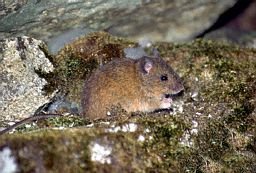 |
| About the Wood Mouse: The Wood Mouse or Luch Fheir: the Irish word 'luch' occurs in the place-name Inchnalughoge – the 'mouse’s meadow' in Co. Clare. The earliest record is a tooth found at Clondalkin near Dublin dating from 7600 years ago. Some wood mice are descended from mice which came on Viking longships. It lives high up in the hedge in autumn and winter, searching for fruit until the last rose hips go in February. They eat mainly seeds but also fruits and fungi and invertebrates. They use old nests as feeding platforms, filling them with the litter of hip and acorn left-overs. In summer many are found in cereal fields. It has a brown coat and is whitish underneath, while its dark eyes and pale ears are prominent. |
| Newt - Common Newt |
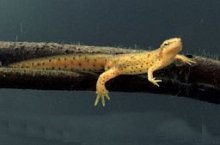 |
| About the Common Newt: The Common newt or Earc Sléibhe is the only species of newt found in Ireland. Newts spend the summer in fresh water and hibernate in winter, usually beneath stones. The female newt is light brownish, paler underneath, and the larger male is greyish and profusely spotted with black. In spring when the pair have taken up residence in a pond disused well or other freshwater habitat, the male develops a bright orange belly flush with blue and red markings on the tail. A long wavy crest along the back is used to full effect in an elaborate underwater courtship display. Eggs are laid individually in a folded pondweed leaf; these hatch out into tadpoles complete with gills for underwater breathing. |
| Otter |
 |
| About the Otter: The Otter lives in what is called a “Holt”. They are the common along the river bank. Otters are carnivores. They eat small water birds, frogs and water voles, but most of all they like fish. They breed in the spring. Otters are in danger because they are hunted for their fur. Although Otter hunting is banned in many countries, they are under threat because people have taken over places where they live, or polluted the rivers and lakes. Otters need to be protected. Otters hunt mostly at night and use their hind feet like flippers. |
| Pine Marten |
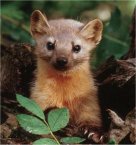 |
| About the Pine Marten: The Pine Marten or Cat Crainn is Ireland’s rarest wild animal. It is usually found in the West and South of Ireland. They are a shy animal and are also very hard to find. Their coat is usually a rich, dark brown in colour. Pine marten’s are sometimes called Marten Cats in some parts of Ireland. But they have shorter legs and longer bushy tails than cats. They are a woodland animal, with good strong feet and claws for climbing. The Pine Marten defends itself fiercely if attacked by other animals. As it start’s to get dark the Pine Marten slip’s out of its den and starts a night's hunting. In winter and spring they eat rats, mice, rabbits, small birds, and beetles. They nest and rest usually above ground. |
| Rabbit |
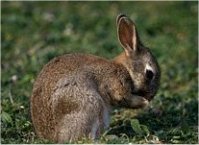 |
| About the Rabbit: Introduced to Ireland by Normans for meat, it used to be raised in rabbit warrens and this can be seen in some place names today like Warrenhouse Road, Baldoyle. The warren is a maze of tunnels, which can cover a small field. They feed on grass, plants, herbs and the bark of trees and shrubs. They can cause damage to farmland as they eat the roots as well as the leaves of grasses. They are found in the sandy bottoms of hedges or on the dry banks of field boundaries. It is easy to recognise by its white ‘puffball’ tail which jerks as it runs away. Its fur is usually grey-brown with variations from black to white. |
| Rat - Brown Rat |
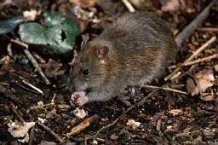 |
| About the Brown Rat: The Brown Rat probably came from eastern Asia and reached Ireland about 1722 aboard ships coming from Russia or eastern Europe, by 1730 it was already a pest in Dublin. They live anywhere and breed mainly in summer. They eat anything but are mainly vegetarian. Because they live in sewers and near rubbish tips, they pass on “Weils” disease to humans which can be fatal. It is preyed on by foxes, dogs, cats, stoats and barn owls. They are good swimmers, jumpers and climbers. They mostly come out at night but forage by day when food is near. |
Back to Index Page | Previous Page of Mammals | Next Page of Mammals